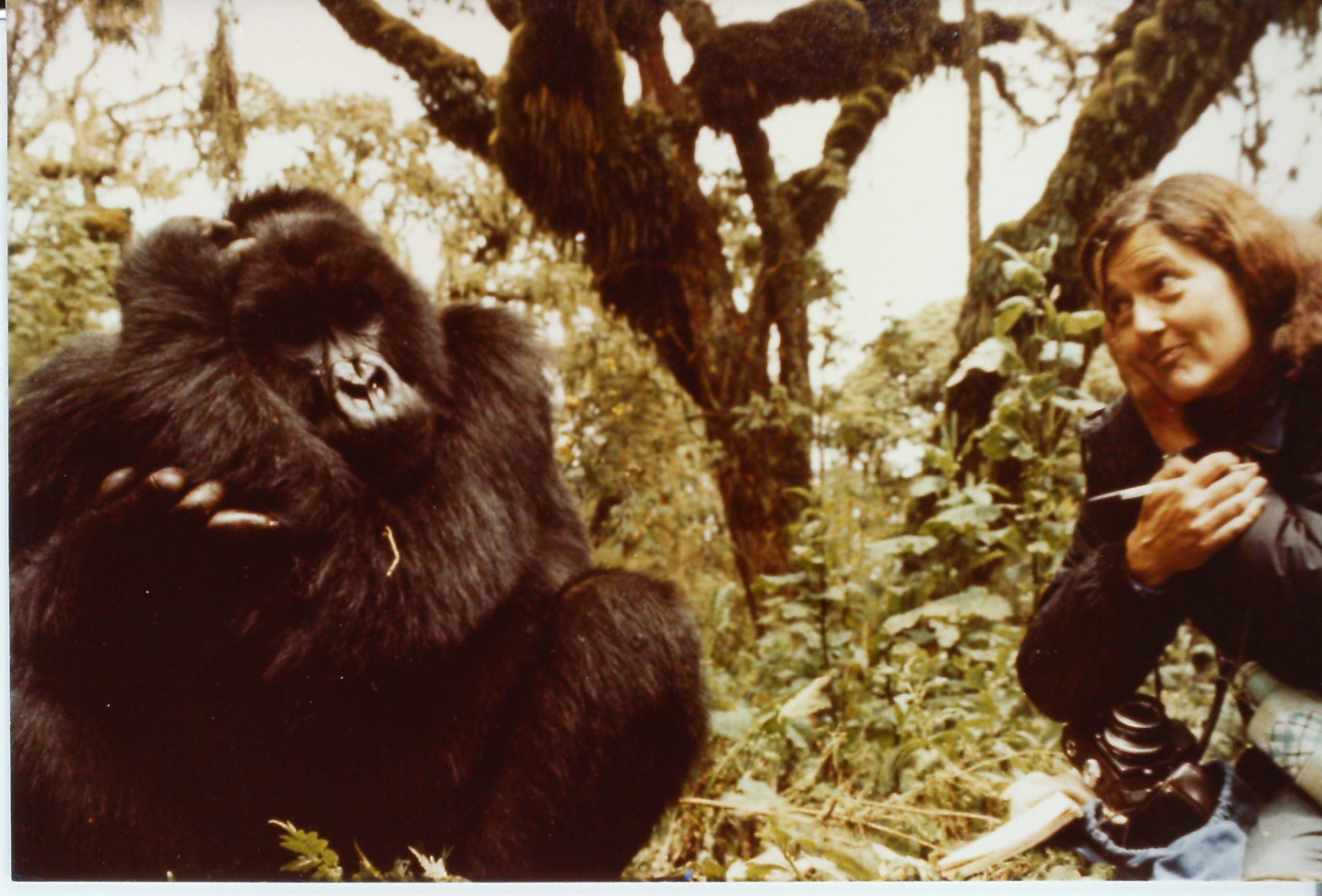If you’ve been following us for long, you know we have an amazing collection of photographs—not just of gorillas, but of the many plants and animals that share their biodiverse habitat. On World Photography Day, we typically like to give a shout out to our staff photographers and videographers, who help us to share the beauty of this important habitat with you.
This year, though, things have been a bit different in Rwanda, where we study and protect endangered mountain gorillas, and in the Democratic Republic of the Congo, where we work with critically endangered Grauer’s gorillas. The coronavirus is still a significant threat to both humans and gorillas, as vaccines are not yet widely available in many parts of Africa. In an effort to reduce the risk of transmission to the gorillas we work so hard to protect, we continue to limit staff access to the forest near our Karisoke Research Center, and so our talented photographers have been unable to join our researchers and trackers in the forest.
But we still need to photograph these magnificent animals in order to add to our 50+-year database of scientific research into mountain gorillas, and so it has fallen to our research assistants to step in and take photographs in addition to their usual workload. We recently asked a few staff members to share what they’ve learned about photography this year and to show us their favorite pictures.
Jean de Dieu Nsanzineza, a research assistant with the Fossey Fund for the past three years, says his new duties as a photographer have taught him to “carry a camera in hand wherever possible” so he doesn’t miss a good shot. While monitoring Pablo’s group, collecting data on the gorillas of this large group as part of his regular duties, he also managed to take a gorgeous photo of a gorilla family in the group. It’s his favorite photo of all the ones he’s taken this year, he says, because “it shows a complete family, with a father, mum and an infant.”

Gorilla Protection and Monitoring Officer Jean Pierre Samedi Mucyo has been with the Fossey Fund for 10 years and says that this year, in his new role as photographer, he learned to use different modes on the camera to capture images of the gorillas. “It’s hard to choose my favorite photo,” he says, “but currently my favorite is the picture of Ingamiya and Tegereza, from Ntambara’s group, when they were relaxing near the Bisoke Crater Lake. I like this picture because it is rare to see gorillas in this beautiful area.”

Research Assistant James Munyawera also stepped into the role of photographer this year, and he says his new skills include using the aperture and shutter priority modes on his camera. He also learned how focusing on perspective and angles can create beautiful images. “My favorite photo is of Gutangara’s family. All the descendants of adult female Gutangara in Pablo’s group were included except Gwira, who was resting two meters from the rest of the family. It was remarkable because they acted like they were gathered for a shot. And as it is in humans, it is also great to see a family together.”

While we look forward to the day when things get back to “normal” in the rainforests and our staff photographers can join us as we conduct research, we think you’ll agree that our research assistants and scientific staff have done a fantastic job of capturing images of the gorillas and their forest home.






